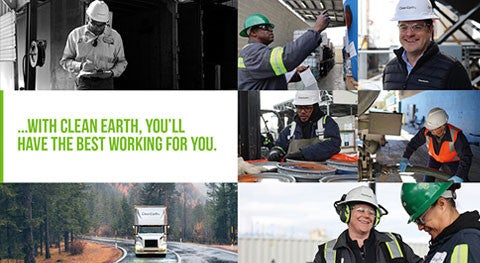Hurricane Preparedness Best Practices
Often, a natural disaster requires an emergency response for fuel, chemical or hazardous waste spills. In addition, critical tasks such as identification of unknown substances, spill containment, proper waste handling and clean-up are critical during this time.
Unfortunately, too many businesses focus more on how to address the aftermath of a hurricane – or other extreme weather – rather than preparing for the next event. One of the most dangerous and costly mistakes organizations can make is neglecting to prepare hazardous waste for the impact of natural disasters. To reduce the risks of injury, environmental harm or regulatory penalties, a successful response to a disaster requires extensive expertise and knowledge of hazardous materials and waste management.
Hurricane season doesn't officially start until June, but experts have forecasted another overactive season for 2021. As we head into peak months for hurricane development, Clean Earth is helping organizations prepare and remain compliant. Below we have listed our top tips to ensure you are ready.
1. Review hazardous waste inventory
Before any action steps can take place, it is necessary to understand what is considered hazardous waste. The U.S. Environmental Protection Agency (EPA) defines hazardous waste as “waste with properties that make it dangerous or capable of having a harmful effect on human health or the environment.” Once an item with hazardous properties is no longer usable, it is deemed hazardous waste.
2. Track the path of a storm
Groups like the National Weather Service offer tools, maps and alert systems to help individuals and organizations stay in front of dangerous and potentially threatening storm systems, including the ability to get warnings by state.
3. Store containers in a secure area and verify proper closure
Before disaster strikes, take steps to prevent waste from releasing inside the facility and into neighboring communities. If possible, remove excess waste and hazardous materials from the facility before inclement weather hits. Containers should be closed, sealed and relocated to a reinforced area or off-site space. Elevating containers can help prevent a release, especially if flooding is a concern.
4. Segregate waste
Clearly identify and segregate waste to avoid reactions and keep spill kits available and well-stocked. Segregation is key in hazardous waste – ensure the materials are in proper containers, in secure locations, and ultimately go to their end disposal in a manner that meets regulatory requirements of the EPA, Department of Transportation (DOT) and all regulatory agencies.
5. Review emergency response plans
Examine your facility’s contingency plans and understand evacuation routes. Strategize on a successful emergency response plan and have the plan in place before it is ever needed. When developing a natural disaster emergency plan, consider:
- Who will make crucial decisions in the event of a storm?
- What is the chain of command and communication?
- Who will be involved in hazardous waste management?
- Who will assist in waste removal?
6. Communicate emergency response contractor information
Even with a proper emergency response plan in place and great awareness of the importance of regulatory compliance, it is often necessary to enlist the help of hazardous waste removal experts. Professional response is essential to several high-pressure tasks, such as identifying unknown substances, managing spill containment, handling hazardous waste and overseeing clean-up. Ensure your team has the contact information for your emergency response contractor before disaster strikes.
Clean Earth is available around-the-clock to help organizations keep employees and facilities prepared and safe during hurricane season. Our team has responded to thousands of environmental emergency calls, providing disaster recovery assistance after hurricanes, tornadoes, floods and other natural disasters. To learn more about how we can assist you in emergency preparedness and response, visit our website.

